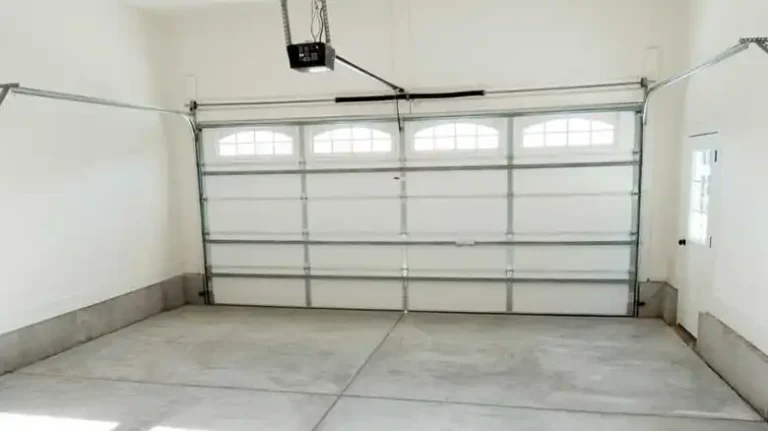Is Kicking in a Door Hard?
Is kicking in a door hard? It’s a question that naturally arises when we see forced entries portrayed so easily in movies or video games. But before attempting to break down a door, it’s valuable to truly understand the difficulty involved. This guide aims to explore that complexity for purely educational purposes.
While depicted as simple, kicking in a door can be remarkably challenging in real life. The goal here is not to provide instructions, but to highlight key factors that influence the difficulty of entry. These include the door’s materials and construction, any reinforcements present, the frame it’s set in, which direction it swings, and the proper stance and technique required. You’ll see how each aspect impacts the approximate force in newtons needed to gain entry.
Briefly breaking a door by force is no straightforward feat. It requires assessing vulnerabilities, finding weak points, choosing methods wisely, and applying precise techniques. Our overview addresses this nuance. But the intent is solely to satisfy intellectual curiosity, not enable illegal acts. But before anything else, I denounce unlawful entry and emphasize the serious risks it poses. With that context in mind, let’s begin our objective examination of the true complexity of door entry.

Assessing Door Toughness
Evaluating the door and frame materials is crucial for understanding the level of difficulty and force required. Hollow-core doors are the easiest to kick in, made of thin sheets of wood or metal surrounding a hollow interior space. These doors offer little resistance and can typically be broken with around 500 newtons of force, equivalent to the weight of a 50 kg (110 lb) person.

Solid-core doors are more difficult, constructed from solid wood or metal with no hollow space inside. They have increased strength and can withstand up to 1000 newtons of force, equal to the weight of a 100 kg (220 lb) person.
At the higher end, reinforced doors present the greatest challenge. Built with steel or other durable materials and fortified with reinforcements like deadbolts, metal plates, or crossbars, these doors resist very high levels of force. It often takes 2000 newtons or more to kick in a reinforced door, comparable to the weight of 200 kg (440 lb) or more.
The door frame is also a factor, as its strength determines how securely the door is held in place. Weak frames made of thin or soft materials that are single-sided can be detached with around 500 newtons of force. But strong frames crafted from thick hardwood or steel and double-sided require 1000 newtons or more to dislodge.
Inspecting the door swing direction provides clues on entry difficulty. Inward swinging doors are easier to kick in, only necessitating between 500-1000 newtons depending on their materials. Outward swinging doors are harder, needing anywhere from 1000-2000 newtons due to their natural resistance against force.
Look for visible hinges, locks, and stoppers on your side to indicate an outward swing, while hidden hardware signifies an inward swing. Test by pushing lightly to feel which way the door gives.
Mastering the Stance
The proper stance is vital for generating optimal kicking power and impact. Four key elements to address are distance and facing, use of the dominant foot, stability, and body positioning.
The ideal distance is around one meter or three feet away, allowing enough room to build momentum without being too far away. Perpendicular to the door is the optimal facing direction, aligning your body and foot straight on with the target area.
Use your arm to measure an exact meter and stand with feet shoulder-width apart facing the door. Rotate your body sideways, keeping your front foot pointed at the door.
For maximum force, your dominant foot should be the front foot you kick with. Test by kicking a pillow or the air to determine your strongest side. Place it about 12 inches from the door, turned to be flat and parallel.
Stability comes from having the proper grounded posture. Bend your knees slightly to lower your center of gravity. Firmly plant your rear foot to secure your balance. This provides a solid base and prevents slipping.
Straighten your upper body with shoulders relaxed and chest forward. Look directly at the impact zone without twisting or turning your head. Keep your eyes locked on the target.
Techniques and Vulnerabilities
The lock and door frame are typically the weakest points suitable as primary targets. Locks secured by knobs, handles, deadbolts, or a combination can often be broken with 500-1000 newtons of force. Detaching or damaging the frame requires 1000-2000 newtons depending on its material and construction.
Areas above the lock are effective secondary targets, especially on inward swinging doors where an upper strike can crack or bend the door to create an entry gap. Approximately 1000-1500 newtons of force are needed in this area.
Below the lock is generally not recommended, as lower strikes can cause outward swinging doors to rebound and reinforce themselves. Aim low only with extreme caution and force of 1500-2000 newtons or more.
The proper kicking technique is equally important. Keep your foot flat during impact to distribute force across the door and prevent injury. Also, maintain a slightly bent leg to generate more momentum power.
Finally, decide whether a single focused blow or multiple lighter strikes is best suited for the situation. Each has advantages based on required power, strength, and precision.
Reading the Situation
Analyzing sounds and feedback after the first kick provides critical information to guide the next steps. Cracking or splintering noises signal a weak or damaged door, making a second kick likely effective.
A loud thud suggests a stronger door that remains intact. Subsequent kicks may work but also increase difficulty and risk. Unexpected clicking or unlocking sounds indicate a reinforced door not vulnerable to additional force.
Compare before and after noises to gauge changes in difficulty. Louder, higher pitched, and shorter duration sounds generally mean an easier door. Softer, lower, and longer sounds imply a tougher door.
Use this input to inform smart decisions about proceeding. If feedback is positive, a second attempt may succeed. If negative, reassess the situation carefully. Neutral or dangerous feedback means abandoning entry altogether.
Weigh legal concerns, property damage, and personal safety against any urgent need to persist. Make level-headed evaluations before progressing.
End Note
This concludes our in-depth exploration of assessing the complexity of forced entry by kicking in doors. While certainly possible, it requires careful evaluation of multiple factors from door strength to technique. This overview is aimed at providing insight purely for educational purposes. It does not endorse or encourage unauthorized entry under any circumstances. Attempting to force entry carries serious risks of injury, property damage, and legal consequences which must be avoided.
Instead, utilize this knowledge thoughtfully for fictional scenarios and creative works. Never apply it in real-world situations without the proper authority, permissions, and safety precautions firmly in place. Stay wise and consider how this article may be interpreted by others if taken out of context.
Frequently Asked Questions
- What is the easiest type of door to kick in?
The easiest doors to kick in are hollow-core doors, usually found in homes and apartments. They are lightweight and thin, with empty space inside, making them prone to breaking with a moderate degree of forced entry. Solid core and reinforced doors are much more difficult to kick in.
- How can I tell which direction a door swings before attempting to kick it?
Look for clues like hinges, door knobs, and stoppers. If these are visible from the outside, the door likely swings outward. If they are hidden or only visible from the inside, the door probably opens inward. You can also lightly push the door to feel which way it gives. Knowing the swing direction helps assess entry difficulty.
- What are the risks of kicking in a door in real life?
Attempting to forcibly kick in a door carries serious risks of legal consequences like charges of trespassing, breaking, vandalism, or assault. You also risk physical harm to yourself from broken bones, damaged joints, or other injuries. Property damage, costly repairs, and invasion of privacy are other possible outcomes that must be avoided outside of emergencies.
REFERENCE:

![[Explained] What Router Bit for Door Hinges?](https://doorsuggest.com/wp-content/uploads/2023/10/What-Router-Bit-for-Door-Hinges-768x431.webp)


![[Explored] How to Lock Schlage Door From Outside](https://doorsuggest.com/wp-content/uploads/2023/10/How-to-Lock-a-Schlage-Door-from-Outside-768x431.webp)
